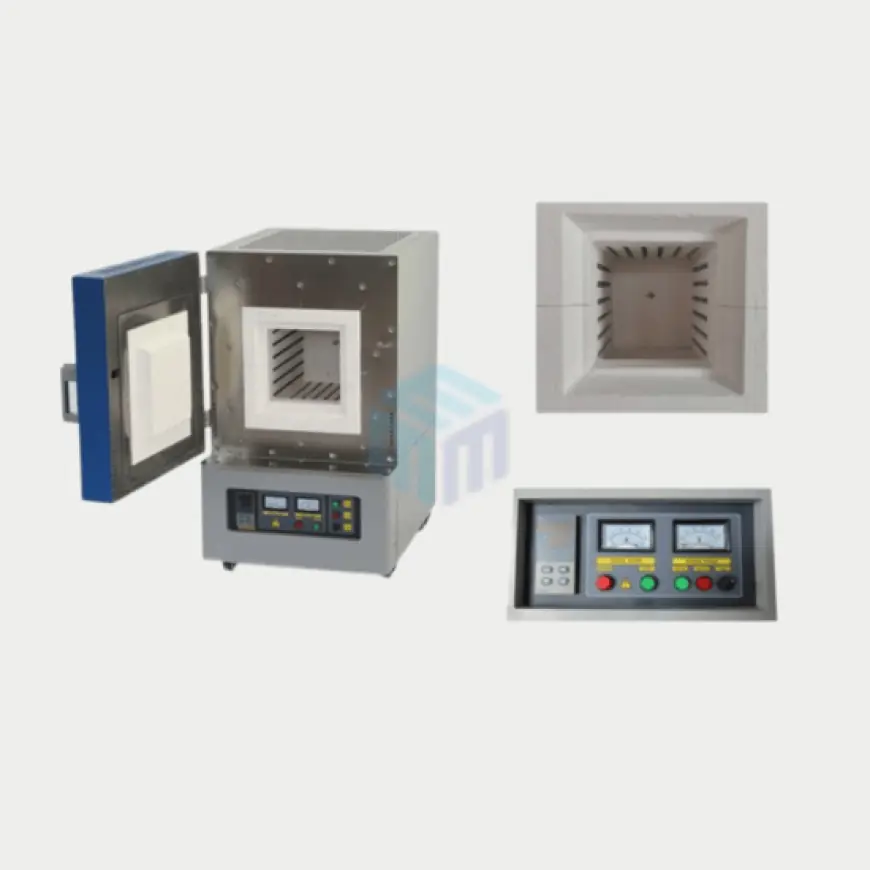Understanding Muffle Furnace Temperature Ranges for Lab Applications
This guide explores common temperature models—including 1200 °C muffle furnace, 1400 °C muffle furnace, 1600 °C muffle furnace and 1800 °C muffle furnace—to help you make the best choice.

Selecting the right muffle furnace is essential for laboratory testing, research, and heat treatment. A well‑matched temperature range ensures accurate, repeatable results. This guide explores common temperature models—including 1200 °C muffle furnace, 1400 °C muffle furnace, 1600 °C muffle furnace and 1800 °C muffle furnace—to help you make the best choice.
1. Why Temperature Ranges Matter
Temperature precision is critical in tasks like ashing, sintering, annealing, and materials testing. Opting for a high temperature muffle furnace can be costly upfront, but it delivers uniform and stable heat critical for reproducibility. The muffle furnace temperature spec defines what processes are feasible—from basic sample prep to advanced ceramic or metallurgy work.
2. Key Temperature Ranges in Detail
a) 1200 °C Muffle Furnace
Ideal for routine lab applications, a 1200 °C muffle furnace handles general ashing of organic/inorganic samples, standard metal heat treatments, and basic material testing. These models are energy-efficient and cost-effective, making them suitable for academic labs and small-scale industrial use.
b) 1400 °C Muffle Furnace
When you need more heat for ceramic processing or powder metallurgy, a 1400 °C muffle furnace is a strong upgrade. It supports firing porcelain, high-temperature alloy testing, and chemical analysis. This range is favored in larger R&D facilities due to its versatility.
c) 1600 °C Muffle Furnace and 1800 °C Muffle Furnace
For extreme conditions—like sintering advanced ceramics or experimenting with superalloys—a 1600 °C muffle furnace and a 1800 °C Muffle Furnace delivers. These ultra-high-temperature units offer exceptional uniformity and stability but at a premium muffle furnace price—typically justified only in specialized labs or industrial settings.
3. Factors Influencing Muffle Furnace Price
Several elements impact muffle furnace price:
-
Maximum temp rating: Higher heat capacity tends to cost more.
-
Chamber size & volume: Larger internal dimensions raise material and energy expenses.
-
Control system: Precision PID controllers and digital interfaces increase costs.
-
Insulation quality: Advanced refractory materials improve efficiency but add to price.
-
Safety features: Over-temperature cutoffs, door interlocks, and alarms matter in lab environments.
Balancing performance with budget is key. Even if a high temperature muffle furnace seems overkill, investing in a model with reliable temperature control and insulation may save energy and maintenance costs over time.
4. Choosing the Right Model for Your Lab
Match your furnace to your application:
-
For routine biological or chemical ashing and general metal annealing, a 1200 °C muffle furnace is sufficient.
-
If you require ceramic firing or higher alloy testing, step up to 1400 °C muffle furnace.
-
High-end research on refractory materials or sintered ceramics may demand a 1600 °C muffle furnace or 1800 °C muffle furnace.
Also consider:
-
Ramp rate (how fast it heats)
-
Uniformity (even heat across the chamber)
-
Safety & compliance features (e.g., certifications for lab use)
5. Use Cases by Temperature Range
-
1200 °C: Ashing pollutants, metal annealing, organic/inorganic residue removal
-
1400 °C: Ceramic firing, powder metallurgy, advanced chemical and materials testing
-
1600 °C and 1800 °C: High-performance alloy sintering, refractory material research, aerospace-grade composites
6. Maintenance and Operating Tips
Maintaining performance and longevity:
-
Calibrate thermocouples regularly.
-
Clean out ash or residue after each cycle.
-
Inspect insulation and heating elements annually.
-
Use proper ventilation to maintain safe lab conditions.
7. Summary and Final Thoughts
-
Muffle furnace temperature range should align exactly with your lab’s processes.
-
A 1200 °C muffle furnace works well for routine applications, while 1400 °C , 1600 °C and 1800 °C models open doors to advanced materials research.
-
Evaluate muffle furnace price not just on cost, but on reliable temperature control, energy efficiency, and long-term value.
What's Your Reaction?
 Like
0
Like
0
 Dislike
0
Dislike
0
 Love
0
Love
0
 Funny
0
Funny
0
 Angry
0
Angry
0
 Sad
0
Sad
0
 Wow
0
Wow
0

















































